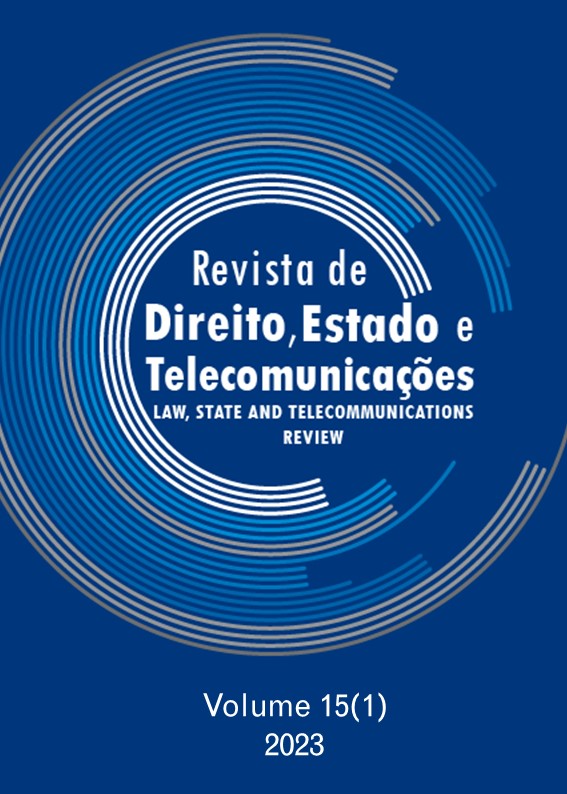Solving the Problem of Forensic Identification of a Person’s Appearance Based on Video Materials
An Integrated Approach
DOI:
https://doi.org/10.26512/lstr.v15i1.43472Palavras-chave:
personal identification, video surveillance system, forensic portrait examination, forensic examination, appearance featuresResumo
[Purpose] The purpose of this study is a comprehensive investigation of modern techniques and developments for recording and analyzing data about the criminal.
[Methodology/Approach/Design] Theoretical and empirical methods, such as statistical analysis, synthesis, induction and deduction, were used for the study. The practical scope of this article includes research by Chinese, Ukrainian, Russian and English researchers in this field. Scientists studied the theoretical and practical scientific literature on the topic, as well as the achievements of modern science in the field of improving video surveillance systems, in order to analyze.
[Findings] It was found that in the context of digitalization, law enforcement agencies can gain access to personal biometric data of citizens, which, on the one hand, simplifies the search for an alleged criminal, and on the other hand, intrudes into the privacy of citizens, thereby violating the law. However, modern security systems and artificial intelligence built into surveillance cameras undoubtedly help solve crimes.
[Practical Implications] The applied value of this study lies in the identification of current issues of both Ukrainian criminal legislation and legislation related to the protection of personal data and their use by law enforcement agencies of such states as the People’s Republic of China, the United States of America, the United Kingdom, the Russian Federation.
Downloads
Referências
Aleksandrov, I. V. (2017). Criminalistics: a textbook for bachelor's and master's degrees. Moscow: Yurayt Publishing House.
Analytical portal word and case. (2022). https://www.slovoidilo.ua/
Barkovskaya, E. G. (2009). The concept of creating criminal records database driven biometrics person. Society and Law, 1, 277-285.
Blokhin, A. S., Zotov, A. B., Kaganov, A. Sh., Nazin, L. F. (2011). Conceptual foundations of forensic examination of video recordings. Moscow: Yurlitinform.
Bulgakov, V.G. (2014). Methodical bases of forensic identification and diagnosis of a person in his dynamic characteristics: a monograph. Moscow: Yurlitinform.
Bylyeva, D. S., Lobatyuk, V. V. (2021). "The face as a technological object". Humanities and Social Sciences, 2, 2-11.
Criminal Procedural Code of Ukraine. (2012). https://zakon.rada.gov.ua/laws/show/4651-17#Text
Gordonua.com. (2022). https://gordonua.com/news/kiev/v-kieve-zapustili-programmu-raspoznavaniya-lic-s-pomoshchyu-kamer-videonablyudeniya-722739.html
Gusev, A.A. (2003). Subject, objects, tasks and methods of forensic portrait examination. Portrait examination. Moscow: Yurlitinform, 7.
Ilyin, N.N. (2018). Forensic-portrait identification of a person by video images. Moscow: Prospekt, 128.
Kharitonov, A.V. (2013). Overview of biometric identification methods. NB: Cybernetics and Programming, 2, 12-19.
Krylov, I.F. (1975). Essays on the history of criminalistics and forensic examination. Saint Petersburg: Nauka.
Liu, G., Wu, J. (2021). Video-based person re-identification by intra-frame and inter-frame graph neural network. Image and Vision Computing, 106, article number 104068.
News portal Vedomosti. (2022). https://www.vedomosti.ru/technology/articles/2019/08/02/807944-tehnologiyu-raspoznavaniya-lits
Podvolotsky, I.N. (2015). Modern forensic trends in human identification by video images. Bulletin of Economic Security, 2, 54-56.
Podvolotsky, I.N. (2019). Preliminary study of video images of a person in portrait examination. Actual Problems of Russian Law, 9(106), 115-122.
Romanko, N.A., Zinin, A. M., Khaziev, Sh. N. (2017). On Forensic Identification of a Person Based on Appearance and Structural Features. Forensic Medicine, 3(1), 21-25.
Shi, W., Liu, H., Liu, M. (2022). Image-to-video person re-identification using three-dimensional semantic appearance alignment and cross-modal interactive learning. Pattern Recognition, 122, article number 108314.
Snetkov, V.A. (1979). Habitoscopy. Volgograd: HIS MIA USSR, 8-9.
Sumari, F.O., Machaca, L., Huaman, J., Clua, E.W.G., Guérin, J. (2020). Towards practical implementations of person re-identification from full video frames. Pattern Recognition Letters, 138, 513-519.
Terziev, N.V. (1956). Forensic identification of personality on the grounds of appearance. Moscow: Prospekt, 131.
Zakharova, L.Yu. (2017). Age of a person as an identification feature. Encyclopedia of Forensic Science, 2 (13), 88-94.
Zinin, A.M. (2012). Riddles of portraits (forensic scientist's notes). Moscow: Shield-M.
Downloads
Publicado
Como Citar
Edição
Secção
Licença
Direitos de Autor (c) 2023 Law, State and Telecommunications Review

Este trabalho encontra-se publicado com a Licença Internacional Creative Commons Atribuição 4.0.
By submitting this paper to the Law, State and Telecommunications Review,
I hereby declare that I agree to the terms of the Creative Commons Attribution 4.0 International (CC BY 4.0).


